6 Basement Organization Tips That Actually Work
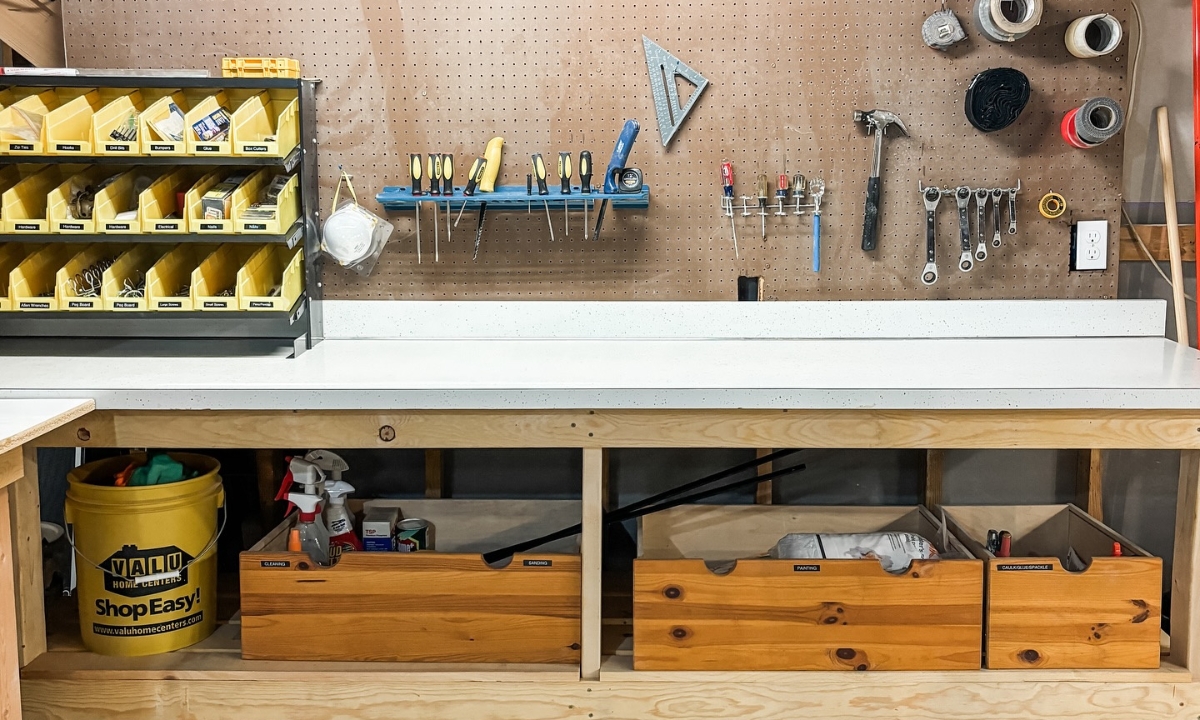
Let’s face it – your basement have probably turned into the chaotic storage area.
Boxes are piled up everywhere, filled with things you forgot you even owned, and there is no real system to keep it all organized.
Maybe you want to turn that space into something practical, like a home gym or a laundry area, but the clutter always gets in the way.
If you are tired of stepping into a dark, overcrowded basement and feeling overwhelmed, you are in the right place.
In this article, I will show you how to organize your basement step by step – without complicated jargon, pricey tools, or confusing systems.
Let’s dive into it!
Contents
- 1 Why Do Basements Get So Dirty?
- 2 6 Tips to Organize the Basement
- 2.1 1. Declutter Without Getting Overwhelmed
- 2.2 2. Set Up Storage Zones That Make Sense
- 2.3 3. Use the Right Bins and Shelves
- 2.4 Step 7: Add Wall Racks or Pegboards for Quick-Grab Items
- 2.5 4. Keep Moisture and Mold Away
- 2.6 5. Make It Easy to Find Things Later
- 2.7 6. Stay Organized All Year with Quick Habits
Why Do Basements Get So Dirty?
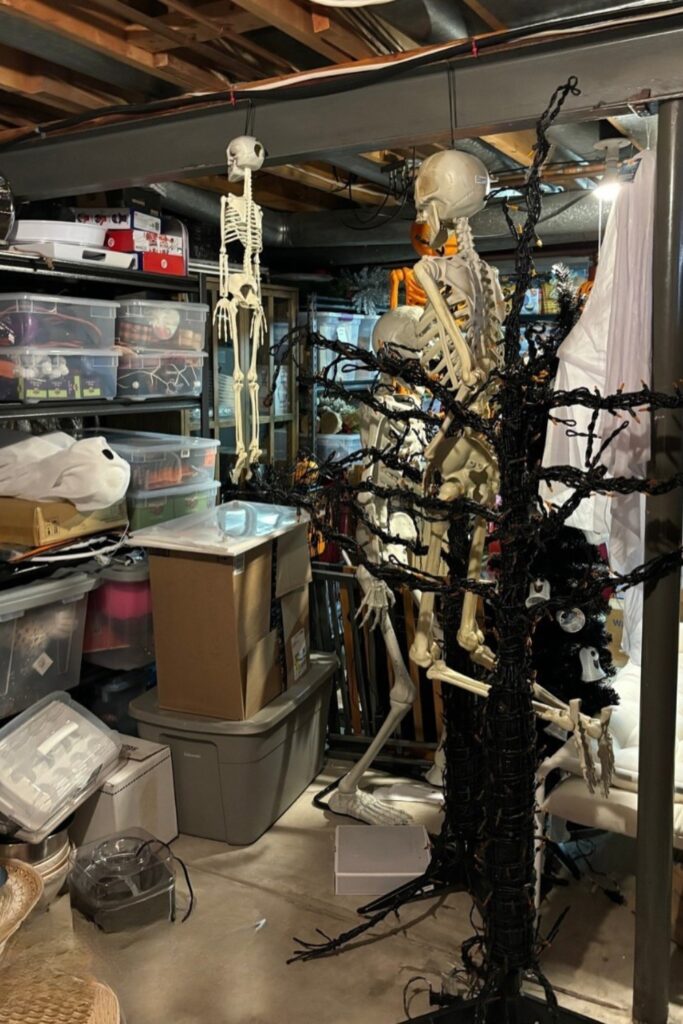
1. It Becomes a Dumping Ground
You carry things downstairs, thinking it is just temporary, but you never bring them back up.
Over time, random items pile up without any clear reason or purpose. There is no system in place – just a mess of boxes, bags, and clutter.
2. No Storage Setup
Most basements do not have proper shelves, bins, or hooks. Items pile up on the floor or sit in torn cardboard boxes.
Nothing is labeled, so you cannot find what you are looking for.
3. It’s Out of Sight, Out of Mind
Because it is downstairs, you overlook the mess. It is not part of your everyday routine like the kitchen or living room.
You only go there when you need something – and leave it even messier.
4. Emotional Clutter Builds Up
You keep old or broken things because you think you might need them one day.
Sentimental items take up space, but they never get used. Letting go feels hard, so the clutter quietly grows.
5. Moisture Makes It Worse
Damp air damages cardboard boxes and furniture. Mold and mildew start growing and spreading.
You avoid the space completely because it smells bad or feels unpleasant.
Related: 7 Staircase Organization Tips
6 Tips to Organize the Basement
1. Declutter Without Getting Overwhelmed
Cleaning out a messy basement can feel overwhelming. That is why most people never begin.
But when you break it into small steps and have a clear plan, it becomes easier and quicker.
Here is how to handle it without feeling drained.
Start with a small area like one shelf or a single box. Set a timer for 20 to 30 minutes to stay focused and avoid burnout.
Use four sorting boxes: Keep, Donate, Trash, and Relocate. Ask yourself quick questions: “Have I used this in the past year?” or “Would I buy this again?”
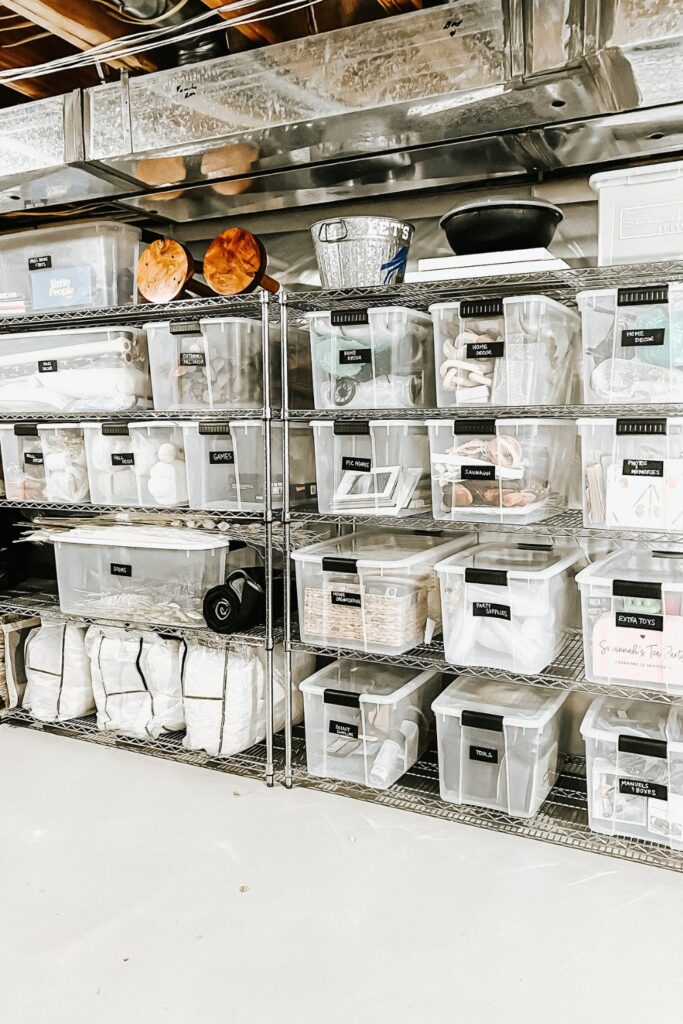
Do not overthink sentimental items – keep a few special ones and take photos of the rest. Let go of any guilt tied to old or unused things.
Focus on progress, not perfection. Every small step makes a difference. Take breaks between sections to avoid feeling overwhelmed.
Do not organize while decluttering. Sort everything first, then organize later. Remind yourself why you are doing this—to create a space that works for you.
2. Set Up Storage Zones That Make Sense
After you finish decluttering, the next step is to give everything a proper place. The best way to do this is by creating zones.
Group similar items together – keep tools with tools, holiday decorations in one area, and sports gear in another.
When everything has a home, you will spend less time searching and keep clutter from coming back.
Use shelves, bins, or even separate corners of the basement to set up each zone. Label it clearly so everyone in the house knows very well where things belong.
Keep items you use often, like cleaning supplies or workout gear, within some easy reach.
Store seasonal and rarely used items on higher shelves or in spots that are harder to access.
If your basement has a laundry area, gym space, or workspace, make sure storage does not spill into those areas.
Use rugs or tape to mark boundaries if needed. Also, leave enough room to walk around. If your zones are too crowded, it will just turn into another mess.
A clear and simple layout will make it easier to keep your basement organized over time.
Related: 7 Dining Room Organization Tips
3. Use the Right Bins and Shelves
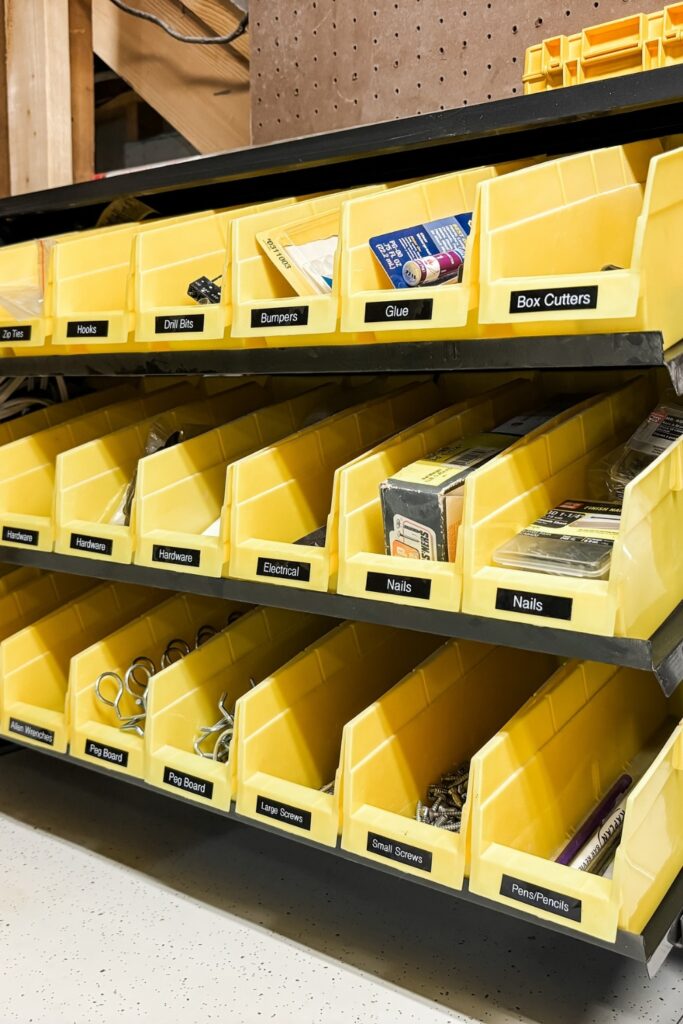
Step 1: Stop Using Cardboard Boxes
Cardboard might seem like an easy option, but it does not belong in a basement. It soaks up moisture, grows mold, and breaks down over time.
The first step you should take is to get rid of any cardboard boxes and plan to replace them with sturdier storage options.
Step 2: Choose Plastic Bins with Lids
Choose heavy-duty plastic bins designed for stacking. These will keep your items dry, safe, and easy to move.
If you want to see what is inside without opening them, pick clear bins.
If you prefer a neater look or need to block out light for items like photos or keepsakes, go with solid bins.
Step 3: Label Your Bins on All Sides
After you get your bins, label them on at least two sides – front and top work best.
This way, no matter where you store them, you can see what is inside without having to open every lid.
Step 4: Raise Bins Off the Floor
Basements can be get damp or have water leaks. To keep your items safe, do not place bins directly on the floor.
Use plastic risers, wooden pallets, or low metal shelves to raise them a few inches off the ground.
Step 5: Pick Strong, Moisture-Resistant Shelves
Avoid wood shelves because they bend and warp when exposed to moisture.
Instead of choosing the metal or plastic shelves that resist rust and can be handle heavy loads.
Shelves are a great way to keep your bins off the ground and make the most of your vertical space.
Step 6: Use Adjustable Shelving (If Possible)
If your budget allows, choose adjustable shelves.
They are let you change the height between shelves, so you can store both large and small bins as your storage needs change over time.
Step 7: Add Wall Racks or Pegboards for Quick-Grab Items
For tools, craft supplies, or everyday items, hang a pegboard or tool rack on the wall. This keeps your things off the floor and makes them easy to grab when you need them – no more digging through bins.
4. Keep Moisture and Mold Away
Check for musty smells, water stains, or peeling paint on a regular basis. Use a dehumidifier to lower the humidity in your basement.
Never store items directly on the floor—use pallets or risers instead. Avoid using cardboard, fabric, or leather for storage.
Choose waterproof plastic bins with tight-fitting lids. Do not use rugs or carpets in damp or unfinished areas.
Keep a few inches of space between the walls and your storage items. Let air circulate to stop mold from forming in tight corners.
Seal delicate items in airtight containers. Check the space every season for signs of dampness or leaks.
5. Make It Easy to Find Things Later
If you do not label your bins, you will end up digging through everything later. Use large, clear labels on the front and top of each bin so you can see them easily.
Stick to simple words like “Tools,” “Winter Clothes,” or “Holiday Decor.”
Color-coded labels can also help – assign one color to each category to make items easier to find.If you store a lot, create a basic inventory list.
You can be write it on paper or save it on the phone. Some people use QR code stickers that link to a list of what is inside each bin.
This is not about being fancy – it just saves you time when you need something later. Spending a few extra minutes labeling now will help you avoid a mess in the future.
Save this article for later! 👇👇
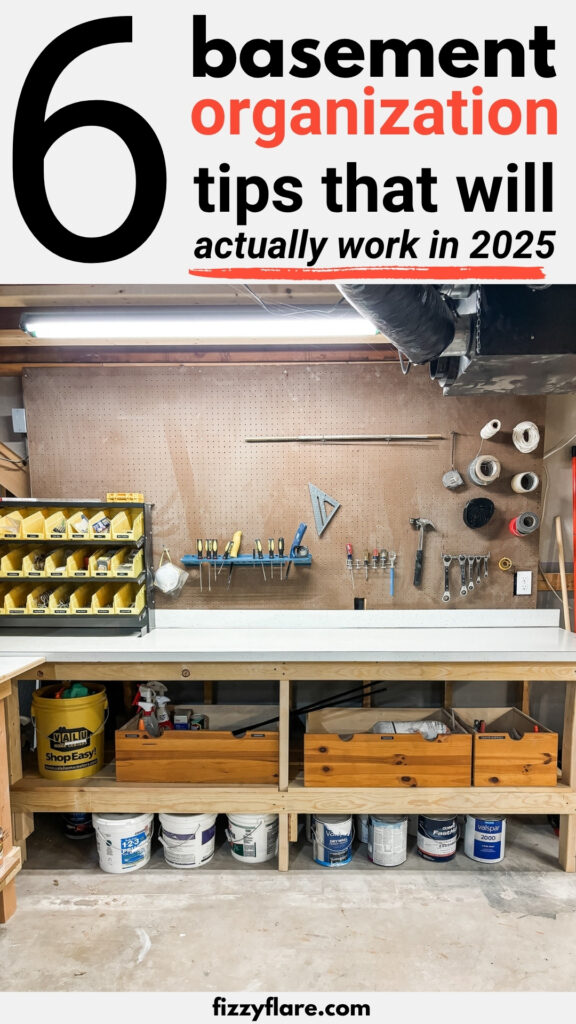
6. Stay Organized All Year with Quick Habits
Keeping your basement organized does not take much time if you build simple habits.
Set a reminder to check the space once a month. Put everything back where it belongs and close any open bins.
Fix small issues before they turn into big problems.
Related: 10 Genius Sofa Organization Tips
At the end of each season, throw out anything broken or no longer needed. This stops clutter from piling up over time.
Follow a “one in, one out” rule – if you store something new, get rid of one item you no longer use.
Do these small steps regularly. They only take a few minutes but will keep your basement from becoming messy again.

Fasial is the founder of the Fizzy Flare. He has been a passionate blogger since 2021. He ran three different websites in the past few years. Now he is focusing on Fizzy Flare to build an audience and help them organize their life.
